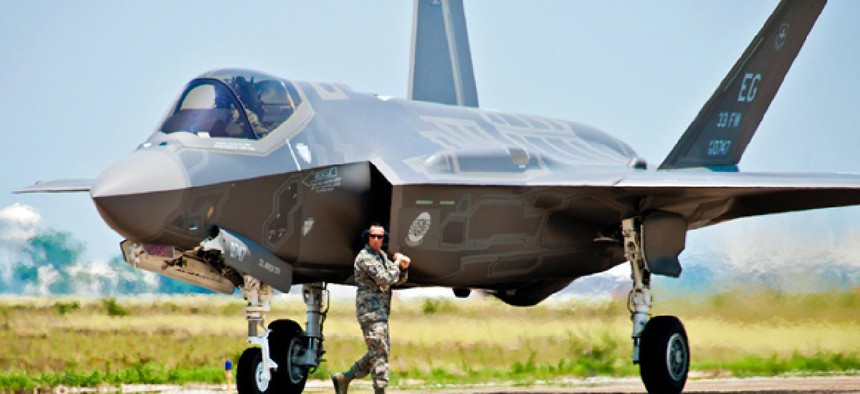F-35 Joint Strike Fighter Not Ready for Combat Until at Least 2019, GAO Says

U.S. Air Force F-35 Lightning II joint strike fighter U.S. Air Force/AP
Software won’t be completed until 2017, followed by tests through 2019.
The $397 billion F-35 Joint Strike Fighter will not be ready to go into operation until at least 2019, 23 years after the Pentagon signed a contract in 1996 with Lockheed Martin to produce just fewer than 2,500 of the aircraft for the Air Force, Navy and Marine Corps, according to a new report.
Initial operational test and evaluation -- or IOT&E -- testing of the F-35, the most expensive Defense Department procurement in history, is scheduled to begin in 2017 and run through 2019, the Government Accountability Office said. These tests will “evaluate the combat effectiveness and suitability of the aircraft in an operationally realistic environment,” GAO said.
These tests will determine if the plane can achieve “key performance parameters [that] are critical to the F-35 meeting the warfighter’s operational requirements. They include measures such as range, weapons carriage, mission reliability and sortie rates. These parameters also cannot be fully verified until the end of IOT&E in 2019,” GAO said.
If the F-35 passes the tests, then Defense can give Lockheed the green light to proceed with production of combat-ready aircraft, GAO said.
Software development for the F-35 presents a “significant challenge” for Lockheed and the Pentagon, with completion of the final version of some 9.5 million lines of code not expected until 2017, GAO reported.
Lockheed and the Pentagon’s F-35 program office recently took steps to improve software management and output, including automated processes which have reduced the time to build and release new software to testing to 30 hours from 187 hours.
But, the report said, “A substantial amount of integration and test work remains before the program can demonstrate full war fighting capability.”
The first major block of software, which supports training flights, was “largely completed” in 2012, GAO said, but it did not fully meet expected requirements for a helmet-mounted display, instrument landing capabilities and the Autonomic Logistics Information System developed to predict and diagnose maintenance and supply issues, automating logistics support processes.
The software block planned to provide limited combat capabilities fell behind schedule last year due to “integration challenges” GAO did not specify and the reallocation of resources to fix defects in the first block of software. It won’t be completed until 2015
Lockheed has “made little progress” on development of the final version of the software which will fuse radar, electro-optical target systems, electronic warfare systems and communications and navigation equipment, the GAO said.
Progress on these “software intensive” mission systems “was limited by contractor delays in software delivery, limited capability in the software when delivered, and the need to fix problems and retest multiple software versions,” the GAO report said. Development and of the most complex systems – which integrates data from subsystems and displays information to the pilot are challenges still faced by Lockheed and the Pentagon, GAO said, with software to support fusion requirements not expected for completion until 2016.
The GAO report echoes criticisms in a January report to Congress by J. Michael Gilmore, director of operational test and evaluation for Defense. That report said the Pentagon has made “virtually no progress in the development, integration, and laboratory testing” of software for production versions of the F-35.



